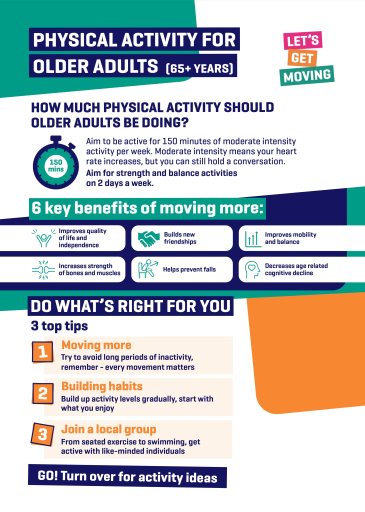Why is Physical Activity Important for Older Adults?
Life expectancy has increased over the years but for some, this is spent in poor health. As we age, we experience physical changes such as decreased muscle strength, muscle power, lower stamina etc which can reduce our ability to perform daily tasks. These changes start gradually in yours 30s or 40s however this process speeds up between the ages of 65 and 80 and are accelerated again due to physical inactivity and increased sedentary time. However, there is strong scientific evidence stating that physical activity can reverse these changes such as strength training can reverse muscle loss.
Older adults should aim to be active for 150 minutes of moderate intensity activity or 75 minutes of vigorous intensity activity per week. Moderate intensity means your heart rate increases, but you can still hold a conversation. Aim for strength and balance exercise on 2 days a week which is the same guidelines adults have. Research shows that keeping active during later life can have many benefits with physical and mental health as well as helping to tackle loneliness and social isolation.
The 6 Key Benefits of Moving More:
- Improves quality of life and independence
- Builds new friendships
- Improves mobility and balance
- Increases strength of bones and muscles
- Helps prevent falls
- Decreases age related cognitive decline
For more information on frequency and type of activities please read Physical Activity Guidelines for Older Adults (PDF Document, 0.14 Mb)
For information on activities for older adults you can access across our district please find Activities for Older Adults 65+.
Related Links (1)
Last updated: Thu 30 November, 2023 @ 08:34